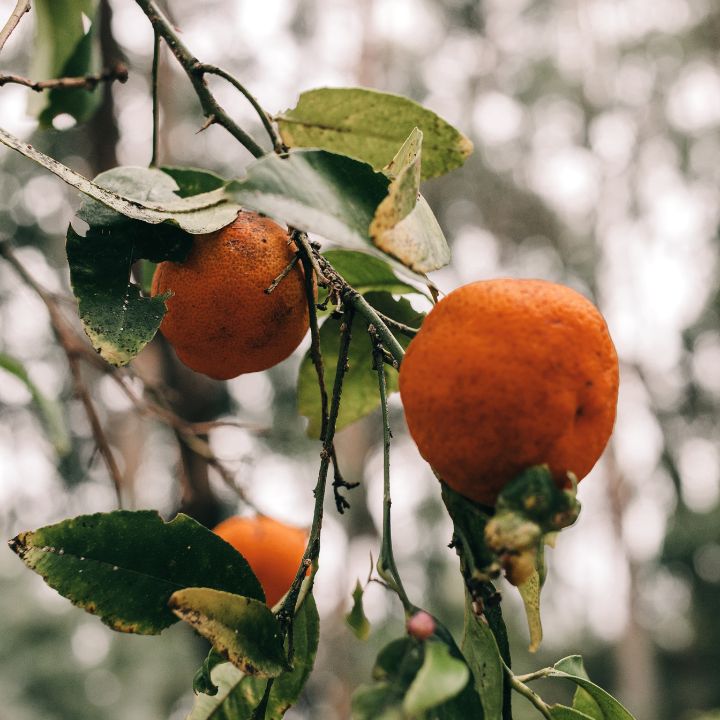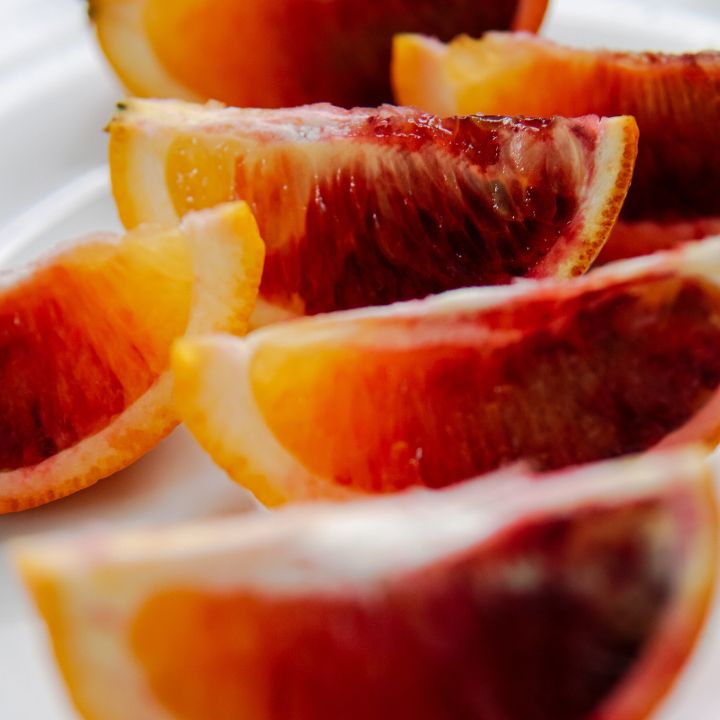Blood Orange Tree
Citrus × sinensis
Learn how to care for blood orange tree along with its history and classification details.

Hardiness Zone: 9-10
Soil Type: Sandy, well draining, neutral to slightly acidic pH
Sun Exposure: Full sun
Annual or Perennial: Perennial
Type: Citrus tree
History: The blood orange was first recorded in Sicily in the 9th and 10th centuries. Due to the succulent appearance and taste of the blood orange they were reserved for royalty. Later on blood oranges became an exported commodity. In the 18th century, blood oranges have thrived in Mediterranean climates, Italy, Spain, and Malta. Currently, blood oranges can be grown around the world, given the right climate. U.S. crops are grown mostly in Arizona, Florida, and Texas. Blood orange trees average between 10′ to 15′ tall, most gardeners reduce the trees down to 8′. The trees can grow between 12′ and 15′ wide. The color contrast between the green of the leaves and the orange and red swirled fruit create a dynamic image in the garden. Blood oranges symbolize royal heritage.

How to Care for Blood Orange Trees
Common questions and details on how to care for blood orange trees.
How do I plant trees?
Find an optimal location for your tree, away from any structures. Dig a hole deep enough for only the roots of the seedling. Do not bury any of the trunk. Water immediately and keep soil moist. Water every 2-3 days until the tree shows signs of new growth, meaning that the tree has established itself.
CAUTION: Some forms or blood orange trees have spines, so you might want to wear gloves.
When is the best time to plant?
The best time to plant a blood orange tree is in March, after the last frost.
How do I propagate blood orange trees?
Take a cutting of the tree, apply a strong hormone, plant and keep under warm and moist conditions. Rooting will take time.
Can I grow blood orange trees in a pot?
Yes, you can grow a blood orange tree in a pot outside or indoors.
How much should I water blood orange trees?
Regular watering keeps fruit in high quality. Blood orange trees require about 1″ to 1.5″ of water weekly. Adjust watering schedule to reflect rainfall.
How do I care for blood orange trees with fertilizer?
The blood orange tree likes to be fertilized a couple of times a year. The tree prefers an ammonium sulfate fertilizer.
When does blood orange trees bloom?
The blood orange tree starts to bloom around April.
How do I know when blood orange is ripe?
You will know when the fruit is ripe based on the look and feel. The fruit should be about the size of a tennis ball and feel heavy in your hand. The skin should not have any green left to it.
When do I harvest blood oranges?
The blood oranges ripen in winter, with the best harvest times being January and February.
Is a blood orange a fruit or a vegetable?
The blood orange is a fruit.
Should I plant any companion plants?
Companion plants for the blood orange tree are dill, fennel, lemon balm, parsley, petunias, and marigolds.
What are the health benefits of the blood orange?
The citrus family have similar health benefits. The blood orange has high amounts of antioxidants and vitamins C, A, and B. They have also been considered to reduce developing cancer, and having strokes. The vitamin C will help to boost your immune system, regulate cholesterol.
How to winterize a blood orange tree?
Keep trees in bright location over winter. You can also bring the trees indoor, if need be. In times of frost you can wrap the trunks with blankets or plastic with a thick layer of mulch.
Blood Orange Curd Tart
The one thing that I will take my finger to lick the container clean is curd. It is delicious. This tart will blow your mind.


Trees exhale for us so that we can inhale them to stay alive. Can we ever forget that? Let us love trees with every breath we take until we perish.
~Munia Khan

